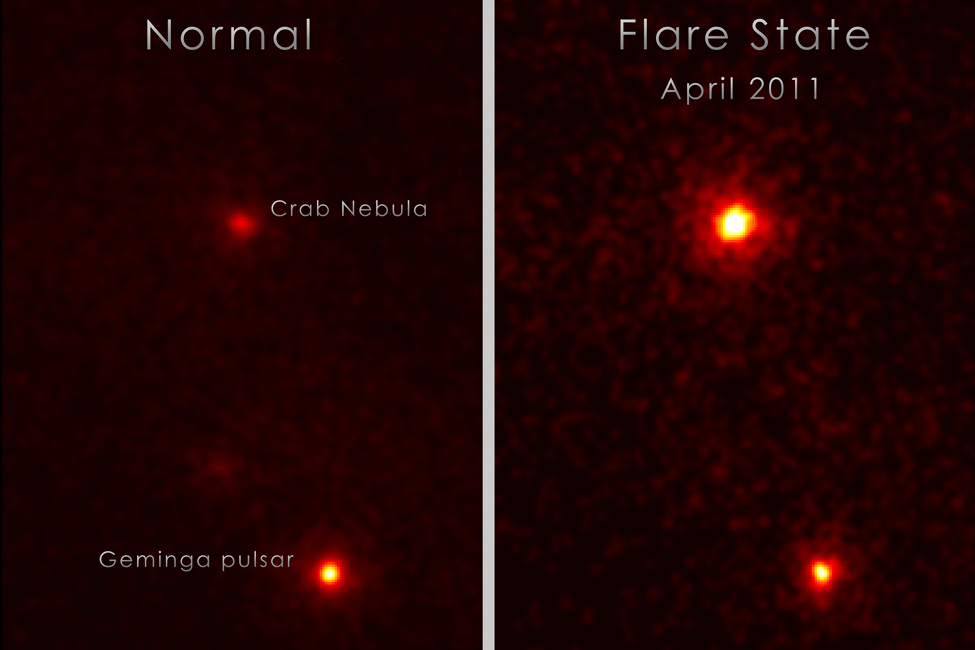
 Credit: NASA/DOE/Fermi LAT/R. Buehler
Credit: NASA/DOE/Fermi LAT/R. Buehler
A Flare from the Crab
Young supernova remnants are some of the steadiest sources of high energy X-ray and gamma-ray emission known. This is because the high energy emission is spread out over a large volume of space, generally many lightyears in extent. Since they are so steady, supernova remnants are used by high energy astronomers to calibrate their instruments and to intercompare one instrument with another. A particularly important object in this regard is the Crab Nebula, the famous remnant of a massive star that exploded in A.D. 1054. So imagine the surprise of Gamma-Ray astronomers when they discovered a sudden increase in the Crab's gamma-ray brightness. This detection was made by a delicate analysis of data obtained by the Fermi Gamma-ray Space Telescope. The Crab's Gamma-rays are dominated by emission from the Crab pulsar, a neutron star that flashes in Gamma- and X-rays 30 times a second as it spins around. To see Gamma-ray emission from the nebula, astronomers used Fermi data to carefully look at the emission in between the Gamma-ray flashes, when the pulsar is turned off. And surprisingly, on April 12, 2011 the Gamma-ray data showed a sudden increase in brightness, as shown in the Fermi image above. Astronomers still don't fully understand what caused the flare, and observations with the Chandra X-ray Observatory around the same time did not show any unusual activity. The emission may have been caused by a burst of extremely high energy electrons interacting with localized magnetic fields a few lightyears away from the pulsar.
Published: May 16, 2011
<
HEA Dictionary ● Archive
● Search HEAPOW
● Other Languages
● HEAPOW on Facebook
● Download all Images
● Education ● HEAD
>

Each week the HEASARC
brings you new, exciting and beautiful images from X-ray and Gamma ray
astronomy. Check back each week and be sure to check out the HEAPOW archive!
Page Author: Dr. Michael F. Corcoran
Last modified Tuesday, 27-Feb-2024 10:15:13 EST


